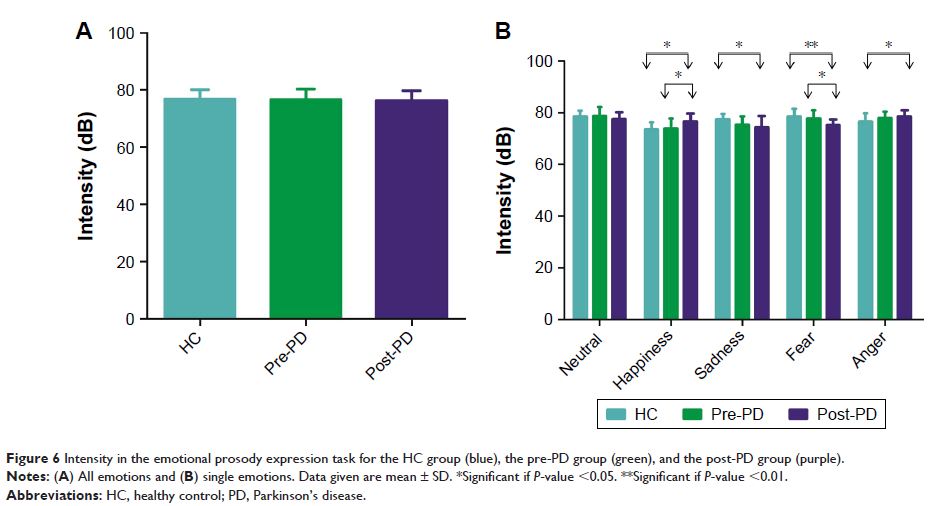108384
论文已发表
注册即可获取德孚的最新动态
IF 收录期刊
- 3.4 Breast Cancer (Dove Med Press)
- 3.2 Clin Epidemiol
- 2.6 Cancer Manag Res
- 2.9 Infect Drug Resist
- 3.7 Clin Interv Aging
- 5.1 Drug Des Dev Ther
- 3.1 Int J Chronic Obstr
- 6.6 Int J Nanomed
- 2.6 Int J Women's Health
- 2.9 Neuropsych Dis Treat
- 2.8 OncoTargets Ther
- 2.0 Patient Prefer Adher
- 2.2 Ther Clin Risk Manag
- 2.5 J Pain Res
- 3.0 Diabet Metab Synd Ob
- 3.2 Psychol Res Behav Ma
- 3.4 Nat Sci Sleep
- 1.8 Pharmgenomics Pers Med
- 2.0 Risk Manag Healthc Policy
- 4.1 J Inflamm Res
- 2.0 Int J Gen Med
- 3.4 J Hepatocell Carcinoma
- 3.0 J Asthma Allergy
- 2.2 Clin Cosmet Investig Dermatol
- 2.4 J Multidiscip Healthc

帕金森病患者丘脑底核刺激后情绪韵律特征的改变
Authors Jin Y, Mao Z, Ling Z, Xu X, Xie G, Yu X
Received 8 October 2017
Accepted for publication 30 October 2017
Published 11 December 2017 Volume 2017:13 Pages 2965—2975
DOI https://doi.org/10.2147/NDT.S153505
Checked for plagiarism Yes
Review by Single-blind
Peer reviewers approved by Prof. Dr. Roumen Kirov
Peer reviewer comments 2
Editor who approved publication: Professor Wai Kwong Tang
Background: Patients with Parkinson’s disease (PD) exhibit deficits in
recognizing and expressing vocal emotional prosody. The aim of this study was
to explore emotional prosody processing in patients with PD shortly after
subthalamic nucleus (STN) deep brain stimulation (DBS).
Methods: Two groups of patients with PD (pre-DBS and post-DBS)
and one healthy control (HC) group were recruited as participants. All
participants (PD and HC) were assessed using the Montreal Affective Voices
database 50 Voices Recognition test. All participants were asked to nonverbally
express five basic emotions (happiness, anger, fear, sadness, and neutral) to
test emotional prosody expression. Fifteen native Chinese speakers were
recruited as raters. We recorded the accuracy rate, reaction time,
confidence level, and two acoustic parameters (mean pitch and mean intensity).
Results: The PD groups scored lower than the HC group in
recognizing and expressing emotional prosody. STN DBS had no significant effect
on the recognition of emotional prosody but had a significant effect on fear
prosody expression. Pearson’s correlation analysis revealed significant
correlations between performance on emotional prosody recognition tests and
performance on emotional prosody expression tests in both the pre-DBS PD and
post-DBS PD groups.
Conclusion: Shortly after STN DBS, the ability to recognize
emotional prosody was not altered, but fear expression was impaired. We
identified associations between abnormalities in emotional prosody recognition
and expression deficits both before and after STN DBS, indicating that the
processes involved in recognizing and expressing emotional prosody may share a
common system.
Keywords: Parkinson’s
disease, emotional prosody, subthalamic nucleus stimulation, emotional
recognition, emotional expression
